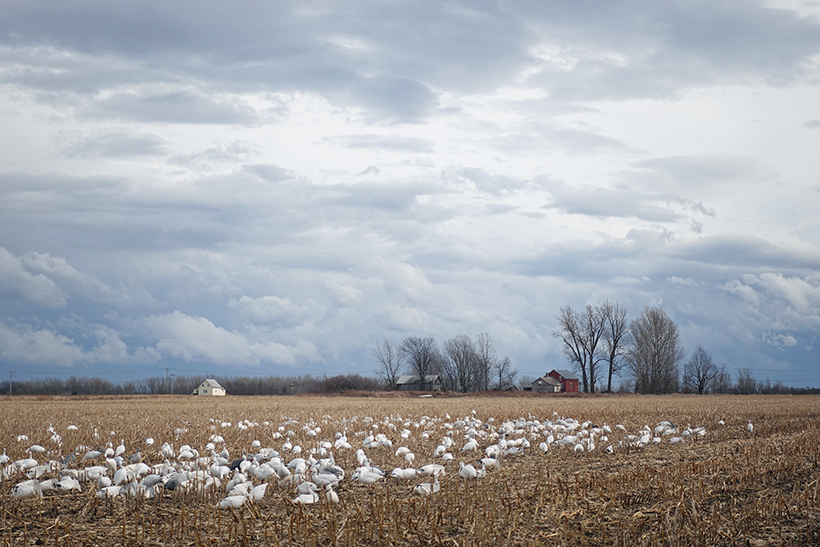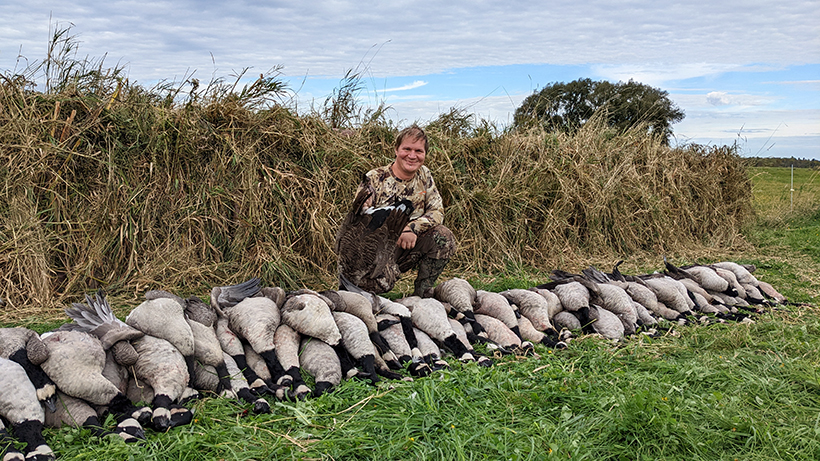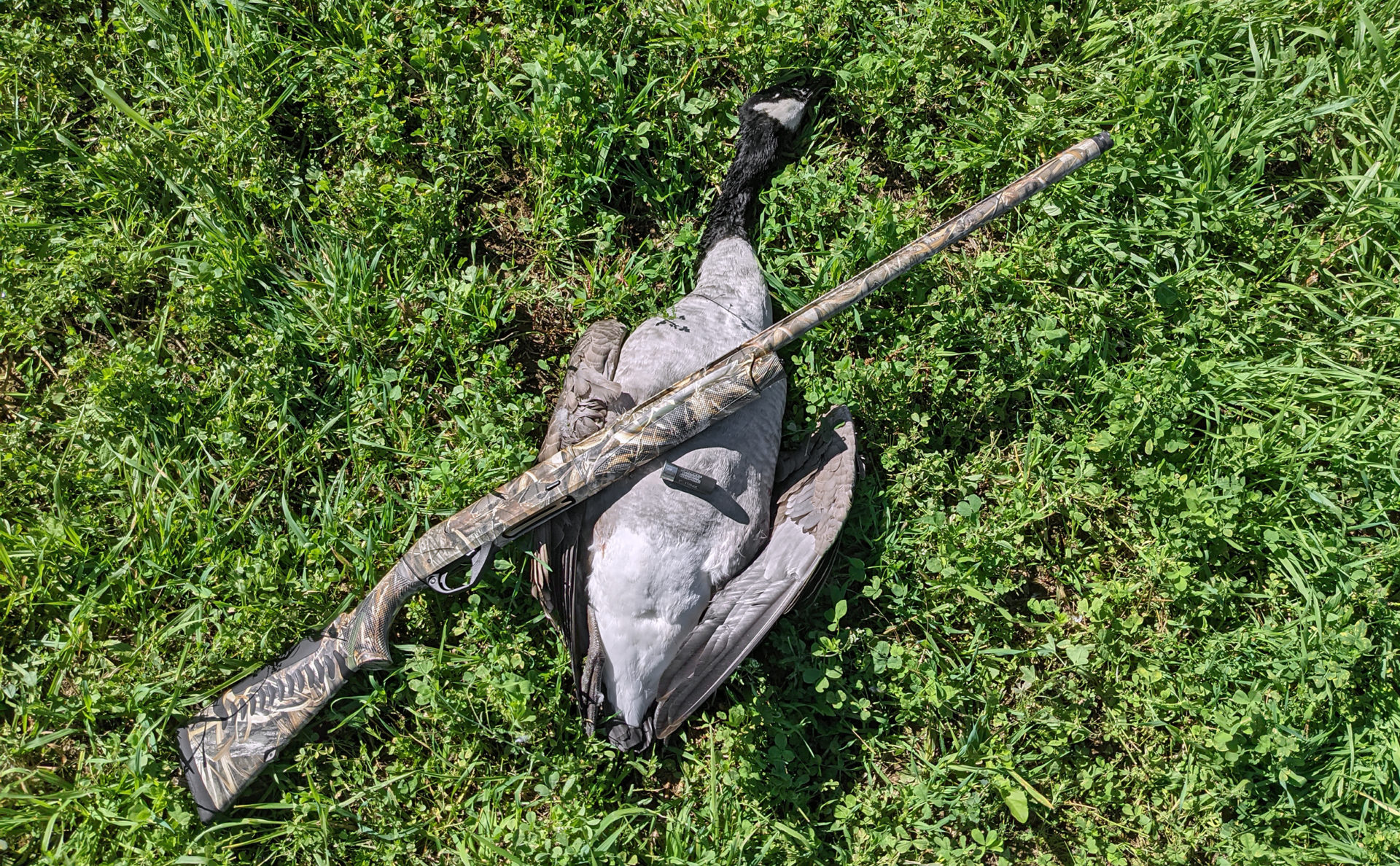Although I haven’t posted about my hunting trips recently, I still head to Upstate New York a couple times a year to shoot waterfowl. In fact I was sitting in a blind in the middle of a field when the NYS lockdown was announced in March 2020 (needless to say, in rural farmland 300 miles north of NYC, this sounded to most like a strange idea), and I’ve kept coming back to hear the most enlightened of my fellow huntsmen explaining their evolving theories about the virus. But apart from all that, several things have changed since I last recounted my duck hunts, and an update is much needed.
Remember Captain Bill, who guided my waterfowl trips on Lake Ontario and on ponds in the Thousand Island region? Only a few years ago, he was rhapsodizing in local media about the flocks of ducks that continue, generation after generation, to return to the same “ancestral holes,” braving sustained enemy fire to reconnect with their family roots, often at the price of their lives. Well, it turns out that what compelled these daredevils to come back perhaps even more was an underwater trough filled with corn that Bill made sure to replenish a few days before the hunt. For those of you not familiar with regulations, hunting waterfowl over baited areas is a violation of the Migratory Bird Treaty Act.
After getting caught by the Department of Environment Conservation, Bill expressed remorse in court and took full responsibility for his actions, noting that he and the guides who work for him are “ambassadors for the outdoors first, and guides second,” and that he’d had extensive discussions with his staff “so this doesn’t happen again.” And yet, the next year, before his probation even ended, he was caught red-handed again and charged by indictment with three felony counts.
Of course, this got me thinking… How many of the hunts I did with Bill were actually baited? Knowing what I know now, I’m almost 100% positive that there’s at least one day when I wasn’t just lucky. Not surprisingly, it was the day I was teamed up with a group of wealthy customers used to hunting exotic animals in preserves in Africa. The most disappointing part of this story is that Bill and his guides are expert waterfowl hunters. In appearance, they followed hunting regulations: we never bagged more than our limits, we never shot before legal time, we were controlled on several occasions by the DEC and everything was in order. Yet, I was left, unable and unwilling to hunt with Captain Bill anymore, to look for another waterfowl hunting guide. Enter Captain Bryce.

While I did go once with one of Bryce’s other guides, duck hunting has been in a tough phase recently. Mallard populations in particular have significantly decreased in the Great Lakes and Atlantic regions, and bag limits have been scaled down accordingly. This means it can be hard to shoot more than a couple birds in a day unless you happen to be at a place and time where many species are flying. I finally decided it wasn’t worth driving a dozen hours over a weekend to wake up at 4 am, freeze my ass off on a boat in the middle of nowhere, and fire only a few shots. In his wisdom, Bryce was quick to encourage me to try hunting geese instead. Goose populations (both Canada geese and snow geese) keep soaring in the Atlantic Flyway. Bag limits are generous, and you don’t have to pull out your hair keeping a tally of how many birds of what species you’ve killed. There are two seasons in New York State that attract the most hunters: September for Canada geese, and March for snow geese. Bryce is pretty much booked solid a year in advance for both, and his customers come from all over the East Coast, if not further, to hunt on farmland in New York’s North Country, very close to the Canadian border.
This is how I became a goose hunter.
If we omit one exploratory hunt outside of these sought-after seasons, my first goose hunt was for snow geese in March 2020 – hence my location during the onset of the pandemic. The greater snow goose (A. c. atlanticus), which travels the Atlantic flyway, breeds north of the timberline in Canada and spends winters in the grassland and agricultural fields of the warm Atlantic coastal plain. This to-and-fro migration takes more than half the year. During spring migration, large flocks of geese fly very high and in large numbers along narrow corridors, and there are hunters waiting for them along the better part of their journey. As a result, these are very cautious birds who won’t fall into your trap if they notice anything out of the ordinary. Dressed in white Tyvek suits, lying down in a field blind, surrounded with decoys for additional cover, hunters must remain perfectly still until the geese decide it’s safe to land – can you spot them in the above pictures? To attract the birds, flying so high in the sky, the guides set up hundreds of decoys (which remain in the field for the entire season), and loudspeakers playing goose calls. The interested birds will circle around as they lower their altitude, looking for the slightest thing amiss: an out-of-place reflection, anything that moves too much, anything that’s not the color of a goose or a corn field…

Because this is a migration, you do have to be there at the right time, which of course depends on the weather. But when the geese are there, they’re there! On the first day of my hunt, there was a drizzle that lasted for hours, and we only saw a couple of birds in the morning. Everything was so quiet that all of the other hunters in the party, presumably disappointed that reality didn’t match the videos they’d watched on social media, left after a couple of hours. The next day was the complete opposite: packs of snow geese kept coming and landing right in front of us from sunrise to sunset (with only a short break at lunchtime), sometimes so fast we barely had time to reload our guns!
For these spring hunts, Bryce sets us up in a hotel in Plattsburgh, on a strip of retail, hotel, and restaurant chains a couple miles from the town center. It doesn’t have the atmosphere of Bill Saiff’s Westview Lodge, but it has working heaters and comfortable beds, and it’s usually a short drive to the fields we hunt. Plattsburgh as a whole isn’t a terribly appealing city – its most defining characteristics might be its SUNY college campus and its proximity to Interstate 87. Check out the column of the MacDonough Monument, take a lonely walk along the Saranac River, grab dinner on equally deserted Margaret Street, and you’ve covered all the town’s “attractions.”
The September Canada goose season, on the other hand, is an opportunity to harvest overabundant resident geese (those that breed in the United States and southern Canada) while their migratory cousins (those that breed in northern Canada) haven’t yet arrived in New York. These are the ones you find in parks, golf courses, and airplane engines; and liberal bag limits are helping to stabilize a population that has quadrupled over the past 25 years. But don’t think that just because they’re not afraid to shit all over your lawn, they’ll be easy to hunt. They’ve been shot at often enough that they know better than to rush down every time they hear calls and see a bunch of decoys in a field! So although we don’t need to wear those annoying Tyvec suits, the precautions are about the same as with snow geese. Before the hunt begins, we set up a hundred or so decoys, assemble our blinds, cover them with branches and grass. We usually leave by noon, as Bryce’s guides spend their afternoons checking all the fields to plan the next day’s hunt. No worries, though: in those morning hours, if the birds are doing it, we have plenty of time to shoot close to our limit.

These September hunts are a large operation, and Bryce rents a lot of fields near Malone, New York. Plattsburgh is known for its university, but Malone, which is even smaller, owes its relative fame to its many nearby correctional facilities. But the small town center has its charm: a bridge on historic Main Street crosses the Salmon River and a nearby mural celebrates the Canada geese that one so often sees above the town – every single time I was outside in Malone, even for a minute, I saw at least one flock of birds in the sky. And so Malone is where you can find me pretty much every evening during my trips, dining at the Hearth of Malone (or just taking advantage of their internet connection).
Unfortunately, however, Malone has few accommodations, so Bryce sets us up in a lodge further south in the Adirondacks, 40 minutes away. This has its pros and cons… On one hand, it is indeed a nice lodge in a gorgeous and very remote part of the Adirondacks, accessed through narrow roads in the middle of the forest. If you bring all your groceries and want to relax with your friends and enjoy the outdoors far from civilization, this is the perfect place. On the other hand, there’s essentially no internet (the lodge has something that’s about the speed of dial-up), there’s nothing else within a 30-minute drive radius, and driving to the fields where we hunt routinely takes an hour or more (meaning I often have to set my alarm clock to the unfriendly time of 2:45 am). If you plan to dine in town, before you know it, you’ve spent 4 hours of your day driving.
Goose hunting is like duck hunting but bigger in every aspect – bigger decoy spreads, bigger flocks, bigger birds, bigger bag limits, bigger action. With a group of 6 hunters, you have a total daily limit of 90 Canada geese or 150 snow geese, and you have a reasonable chance to get half of that on at least one day of your trip. Which leads to the last thing that makes goose hunting bigger: you end up with a shitton of meat. Even if you just take the breasts (the legs are tough, full of tiny bones, and pretty much inedible; there is no meat anywhere else on the carcass), which can already take a couple hours to portion out with everyone working hard on the back of their pickup trucks, one goose will typically make four servings. And I don’t have a big family to feed.
Now, you could think that this is a good problem to have, right? Well… I have to admit that I’m not crazy about goose meat. I like the flavor, but not as much as duck or even venison. And those geese can be really, really tough, which means there are only so many recipes worth preparing with them. If you want to enjoy that pan-fried magret cooked rare, you’d better pick a young bird and make sure to remove every little bit of silverskin. For everything else, I recommend grinding or pounding the meat liberally. Even then, I don’t find a Canada goose burger all that enjoyable. Stews aren’t an option either because the meat is too lean and will just become tough and dry. Do I have some goose recipes that are actually good? You bet, and I’ll share some of them with you soon. Do I want to eat goose meat once a week all year round? No. (And neither should you.)
So as much as I enjoyed hunting geese these past few years, I’m thinking of taking a break – I’ve just been killing more geese than I care to eat. Maybe I’ll get back to duck hunting and come home with just a couple of Mallards in my cooler. Maybe I can combine it with some deer hunting in the afternoons. And yes, later down the road, if I get tired of freezing my ass off in a boat or on a treestand in the rain, maybe I’ll take the funny Tyvek suits out of the closet and get back to some action-packed goose hunting… freezing my ass off in a corn field.

















